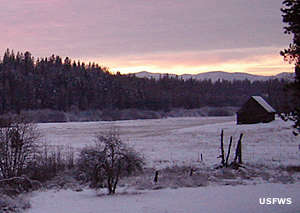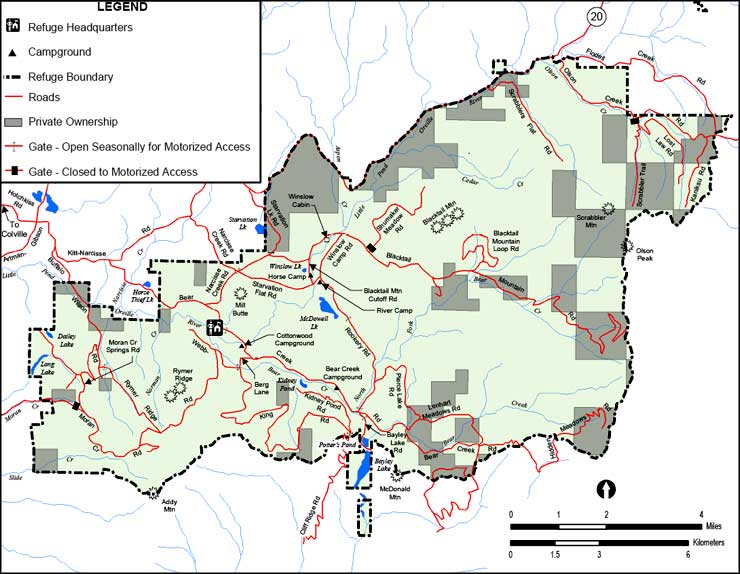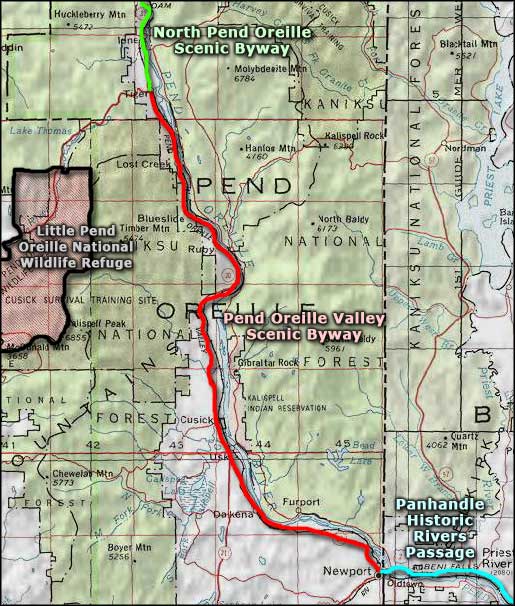Little Pend Oreille National Wildlife Refuge

McMEET Trail Boardwalk at Little Pend Oreille National Wildlife Refuge

Little Pend Oreille National Wildlife Refuge is a 41,568-acre property in northeastern Washington. The refuge sits between 1,800' and 5,610' on the western slopes of the Selkirk Mountains. The largest National Wildlife Refuge in Washington, Little Pend Oreille is also the only mountainous, mixed-conifer forest refuge in the lower 48 states. Most of the lands of the Little Pend Oreille National Wildlife Refuge were acquired through the Resettlement Administration, which concerned itself mostly with retiring marginal farmland. Other land was acquired from willing sellers or through land swaps with the Washington Department of Natural Resources.
There are six forest zones on the property: Ponderosa pine, Douglas fir, grand fir, western red cedar, western hemlock and subalpine fir. Hundreds of species of mammals, amphibians, reptiles and birds make their home among these trees. The refuge is critical habitat for the threatened Canada lynx and critical winter habitat for white-tailed deer but you might also find porcupine, striped skunk, bobcat, mountain lion, elk, black bear, weasel, muskrat, river otter, beaver and other small mammals. Among the birds are bald eagles, woodpeckers, chickadees, nuthatches, Canada geese, red-necked grebes, mallard ducks, common goldeneyes, common mergansers, wood ducks and hooded mergansers. There are also northern goshawk, golden eagle, Vaux swift, ruffed grouse, sage grouse, wild turkey and flammulated owl.
For human visitors, Little Pend Oreille NWR offers fishing, hunting, hiking, horseback riding, mountain biking, snowshoeing, cross-country skiing, photography and wildlife viewing. Unusual among National Wildlife Refuges, Little Pend Oreille offers six established campgrounds, all for free, from April 14 through December 31. The campsites have metal fire rings and vault toilets but no potable water. There are only three established hiking trails available, one of them being an environmental education trail with a trailhead at River Camp, another being a three-mile route that starts near the refuge office.
To get there: Six miles east of Colville on US Highway 20, turn south on the Artman-Gibson Road. Go 1.7 miles to a four-way intersection, turn left on Kitt-Narcisse Road and go 2.2 miles to the fork in the road. Bear right onto Bear Creek Road and go another 3.3 miles to the refuge office. The office is open Monday through Friday from 7:30 am to 4 pm (except Federal holidays). The lands of the refuge are open 24 hours a day, every day, but most of the entry gates are closed to vehicular traffic from January 1 through April 13.
Little Pend Oreille National Wildife Refuge is administered together with Kootenai National Wildlife Refuge and Turnbull National Wildlife Refuge as part of the Inland Northwest National Wildlife Refuge Complex.

Fall colors along Webb-King Road, Little Pend Oreille NWR

Little Pend Oreille National Wildlife Refuge map
Other photos and map courtesy of the US Fish & Wildlife Service
